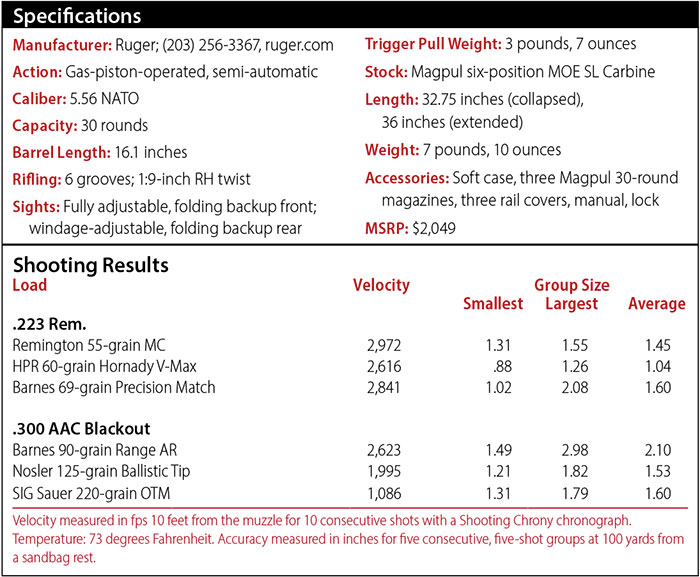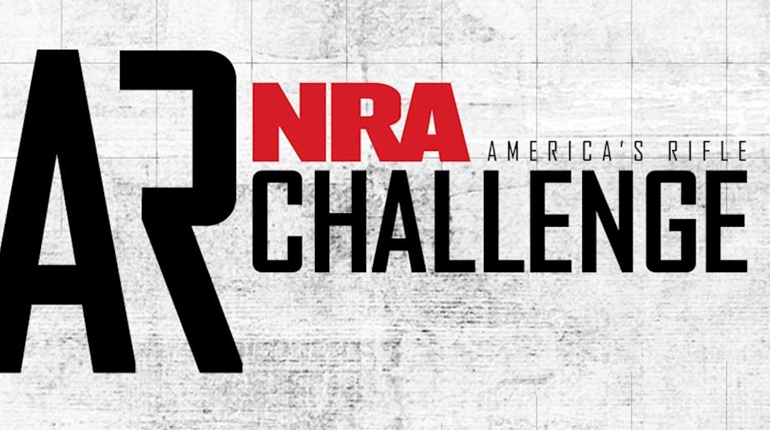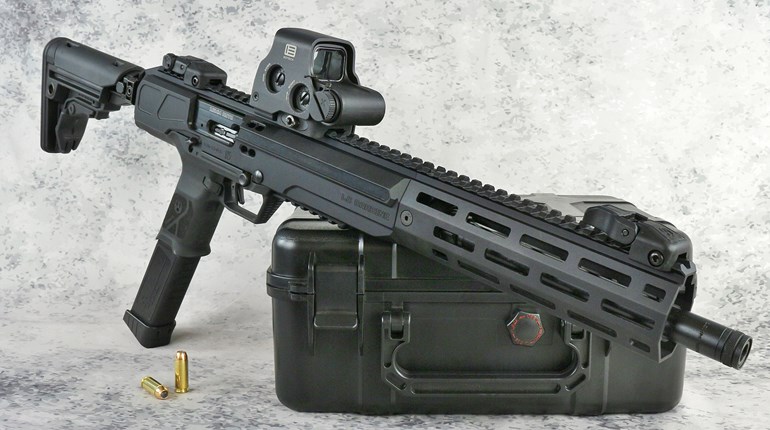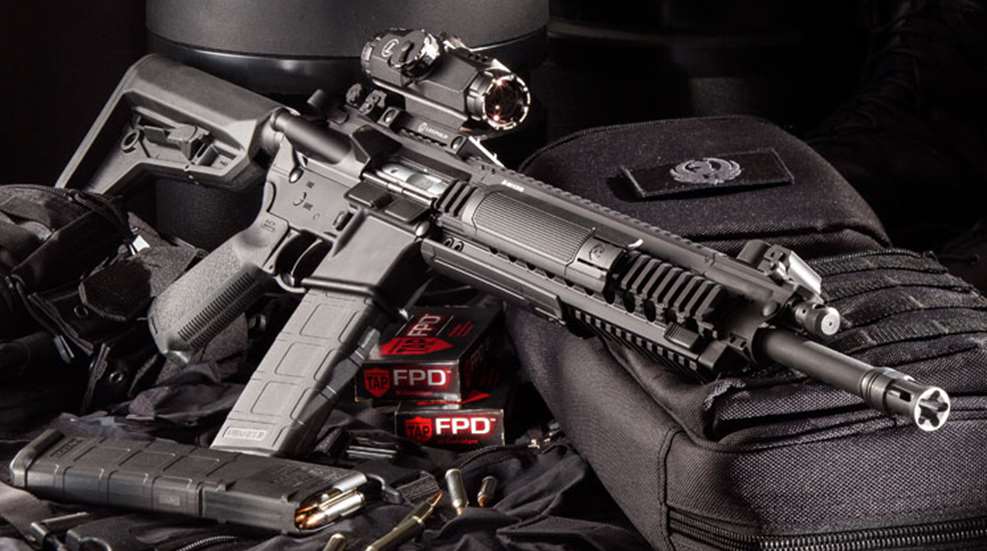
Takedown rifles have an alluring, secret-agent-like quality. There’s just something mesmerizingly cool about pulling rifle parts from a case, assembling them and then making a shot. I’ve always been drawn to takedown rifles. I assume this is partly due to their utility and partly due to nostalgic reflections of the Johnny Seven OMA (One Man Army) rifle of my childhood. No wonder Ruger’s new SR-556 Takedown got my attention.
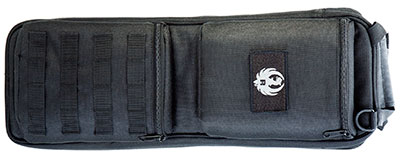
A takedown AR-15-style rifle might seem pointless. After all, by popping two pins, every AR is a takedown. But to meet the serious gun-geek and tactical-operative definition of a takedown, you must be able to remove the barrel from the action. This is the path Ruger took with its SR-556 Takedown and the result is not just a highly modularized system, but also a compact, covert, switch-barrel/caliber carbine.
You might say all AR-15s are created equal. Yes, I know there are countless subtle variations from one AR to the next, but in the end they are all ARs. The Ruger SR-556 Takedown is no different—it looks like a regular AR, functions like a regular AR, has all the controls in the usual places just like any other AR and even smells like an AR when you shoot it. So, let’s dispense with the usual basic description associated with a gun review and get right to the thing that distinguishes the SR-556 Takedown apart.
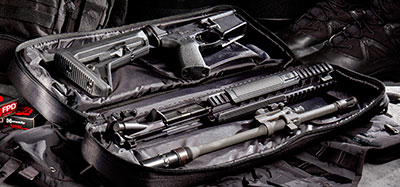
The handguard, though not a monolithic extension of the upper, is a permanent part of the receiver. This 11-inch, aluminum, quad-rail handguard is the heart of the takedown system. It contains the piston, which operates the bolt carrier. It also contains a sleeve coupling, which accepts the barrel shank with integral locking lugs. And, it contains the barrel lock that locks the barrel in place when installed. The top rail has 21 slots, the side rails 27 and the under rail 22. In all, there are 40 inches of mounting space found on the rail for optics, lights, lasers and/or other accessories.
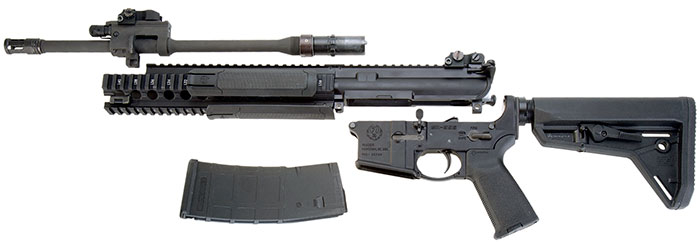
The barrel lock is a spring-loaded, sliding steel plunger that can be retracted by pulling on grooved finger pads on both sides of the handguard bottom. The plunger is about .3-inch wide and shaped like a half-oval. It extends into a recess in the gas block almost a full .2 inch, locking the barrel in place. The barrel is inserted about 10 degrees off-center, the finger tabs are pulled to the rear, the barrel is rotated, the tabs are released and it’s locked in. You can install or remove the barrel in about 5 seconds.
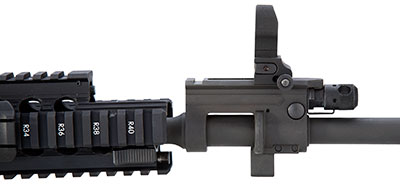
The external barrel-locking lugs that engage the recesses within the handguard coupling circumvent the need for headspacing each time the barrel is installed. This not only applies to the 5.56 NATO barrel that ships with the SR-556 Takedown, but also to any Ruger aftermarket barrel that is available for this platform. Currently, Ruger is offering only a 16-inch .300 AAC Blackout barrel, but it would not surprise me to see other, longer barrels or possibly barrels for other cartridges in the future.
Such practical utility should be obvious; you can switch between 5.56 NATO and .300 AAC Blackout cartridges—in the same rifle—in about 5 seconds. Just be sure you load the correct ammo when switching between the two, because chambering the wrong caliber will have a distinctly fun-free outcome. Wisely, Ruger incorporated windage and elevation adjustment in the front, folding backup sight, which comes standard on each barrel. This allows you to zero the sight to the barrel, and that zero should not change when switching from caliber to caliber. But, there’s more to this utility than just caliber conversion.
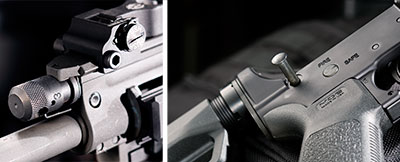
When disassembled, a standard 16-inch-barreled AR-15 carbine’s lower receiver will measure about 16 inches with the stock collapsed. The upper receiver—with the barrel—will measure about 25 inches. Therefore, to store the carbine in its disassembled state, the case must be well in excess of 2 feet long. With the SR-556 Takedown broken into its three components (lower, upper and barrel), however, the longest individual part is its barrel at 18.5 inches (including the chamber). This means the SR-556 Takedown can fit into a significantly smaller case. With that in mind, Ruger includes a 22-inch accessory case with the Takedown rifle. Obviously, this makes transport, concealment and secret-agent-like covertness easier.
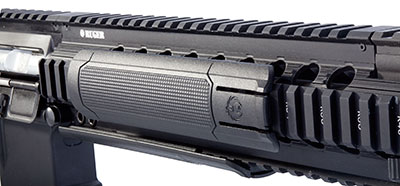
Other features of note include the four-position adjustable gas block that houses the two-stage gas piston. It is integral on the factory-supplied 5.56 NATO barrel and the aftermarket .300 AAC Blackout barrel. This allows you to precisely tune the rifle to your load of choice, or for use with or without a suppressor. The SR-556 Takedown also comes with Ruger’s Elite 452 Two-Stage 4.5-pound trigger and Magpul’s MOE adjustable buttstock and MOE pistol grip. Three Magpul 30-round PMags and the aforementioned nylon case round out the package.

Admittedly, I was skeptical of the takedown concept—it’s easy to make a gun that takes down, but not so easy to make one that is simple to take down and that will shoot with precision comparable to its price. To see precisely how accurate the SR-556 Takedown was, and to see if it would return to zero as advertised when assembled, I mounted an impeccable optic that cost about as much as the rifle: a Nightforce ATACR 4-16x42 mm riflescope. Starting with the 5.56 NATO barrel, I fired five, five-shot groups with a total of three different loads.
At first, the trigger seemed very stiff and heavy. I was about to contact Ruger and tell the company we had a problem, but after roughly 20 pulls it eased up and settled in, breaking somewhere between 3 and 4.25 pounds. I’ll give Ruger credit: the trigger is definitely preferable to any Mil-Spec trigger, but it’s not perfect. At times it felt a bit mushy, releasing the sear at what seemed inconsistent points. On a $2,000 gun, I expected a bit more.
Even so, good groups were the norm. The rifle averaged 1.37 inches for 15, five-shot groups with the three loads tested. Several groups with HPR ammo came in at less than 1 MOA. What I really wanted to know was what would happen if I removed and reinstalled the barrel. Would groups open up? Would the rounds’ point-of-impact shift? I fired a five-shot group with the HPR ammo, removed and reinstalled the barrel and then fired another five-shot group. The combined 10-shot group measured 1.38 inches, obviously showing no noticeable point-of-impact shift. That’s great 10-shot performance from an AR, and quite astounding when you consider the barrel was removed halfway through the shooting session.

I then switched calibers to the .300 AAC Blackout barrel. It installed just as quickly and easily as the 5.56 NATO version that shipped with the gun. Ruger has smartly marked the gas block on this barrel with bold letters indicating it is indeed chambered for .300 AAC Blackout. Likewise, the two magazines that come with the Blackout barrel are similarly marked. Since the potential exists to fire a .300 AAC Blackout cartridge in a 5.56 NATO barrel. Ruger has done all they can to help prevent this possibly horrific occurrence.
I repeated the five, five-shot group string with three .300 AAC Blackout loads. I’ve yet to see an AR chambered in .300 AAC Blackout that shot exceptionally well with both supersonic and subsonic ammunition, however the SR-556 Takedown with the .300 AAC Blackout barrel installed performed better than any AR in the caliber that I’ve yet tested. It delivered an overall average of 1.74 inches for 15, five-shot groups, using both subsonic and supersonic loads. And, as with the 5.56 NATO barrel, the point-of-impact did not change when the barrel was removed and reinstalled.
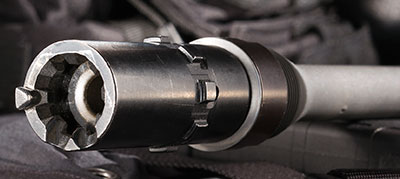
The only point-of-impact change experienced was between the barrels. This is of course expected, and it is the reason Ruger supplies each barrel with a fully adjustable front sight. This allows the zero to stay with the barrel. I was shooting with a scope and found there to be about an 18-inch horizontal point-of-impact difference between the two chamberings. The good news is this shift was repeatable, so it would be feasible to note the zero correction needed. You could swap barrels, make your predetermined scope correction and start shooting—and hitting. In fact, I followed just that exact procedure several times.
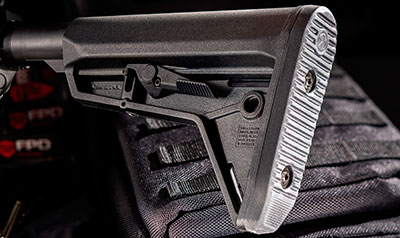
An AR carbine is not intended or designed to be fired from the bench. It is a dynamic firearm, intended to be fired in dynamic situations. This is why our military, law enforcement agencies and competitive shooters in many disciplines rely on the platform. I fired a couple hundred rounds through the carbine conducting various tactical drills and also just plinking. I struggled a bit with the trigger when attempting precision shots off-hand, but the little carbine ran without fail. What’s more, the piston system is much cleaner-running than the direct-gas-impingement option standard on most ARs and the Ruger AR-556.
Although I’m not a huge fan of quad-rail handguards, the supplied Ruger rail covers were much appreciated and comfortable. If you’re not familiar with Ruger’s factory rail covers, they are molded from hard plastic and slide over the Picatinny rail.
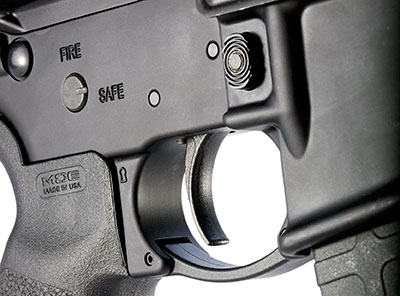
With its SR-556, 10/22 rifles and the Charger pistol, Ruger has set the standard when it comes to takedown firearms. All three guns come with compact, good-looking, organizable carrying cases. With the handy SR-556 Takedown, the entire system—to include the additional
.300 AAC Blackout barrel, five 30-round magazines and even a compact optical sight—fit in the tactical black, covert-looking case that comes with the carbine.
Like you, the last thing I need is another AR. Of course, the “want” in me is screaming, “You need (want) a Ruger SR-556 Takedown!” I’ve always been all about utility and versatility when it comes to guns, and as far as AR-pattern rifles goes, the SR-556 Takedown brings both to the table. It delivers better-than-average accuracy, runs flawlessly, offers multi-caliber possibilities, can be tuned to run with any ammo and/or a sound suppressor and it takes down swiftly into a compact, portable package.
The only downside is the price. I’d have to sell two of my ARs to afford the SR-556 Takedown and its extra .300 Blackout barrel. Interestingly, the SR-556 Takedown has the same suggested retail price as the standard SR-556 or the SR-556 Carbine, were I choosing between them, I know what I’d pick. The upside to the SR-556 Takedown is I’d be well-equipped to start my secret-agent career, and we all know secret agents make more money than gunwriters.

